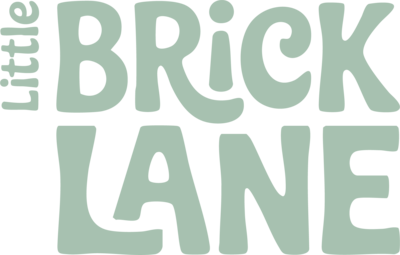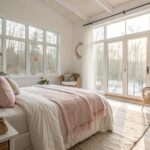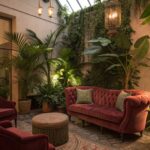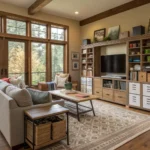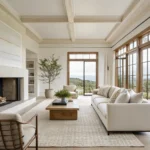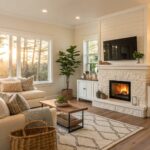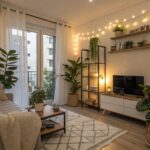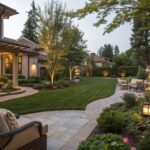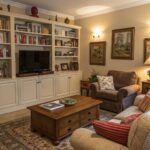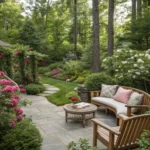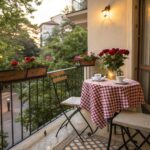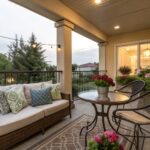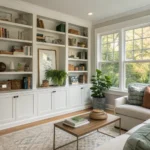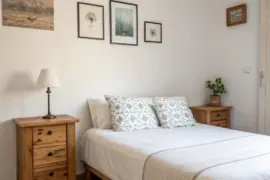The concept of “living in overflow” transforms traditional storage from hidden necessity into curated display, celebrating the beauty of well-organized abundance. This approach embraces the philosophy that storage can be both functional and aesthetically pleasing, turning everyday items into design elements that reflect personal style and lived experience.
Understanding the Overflow Philosophy
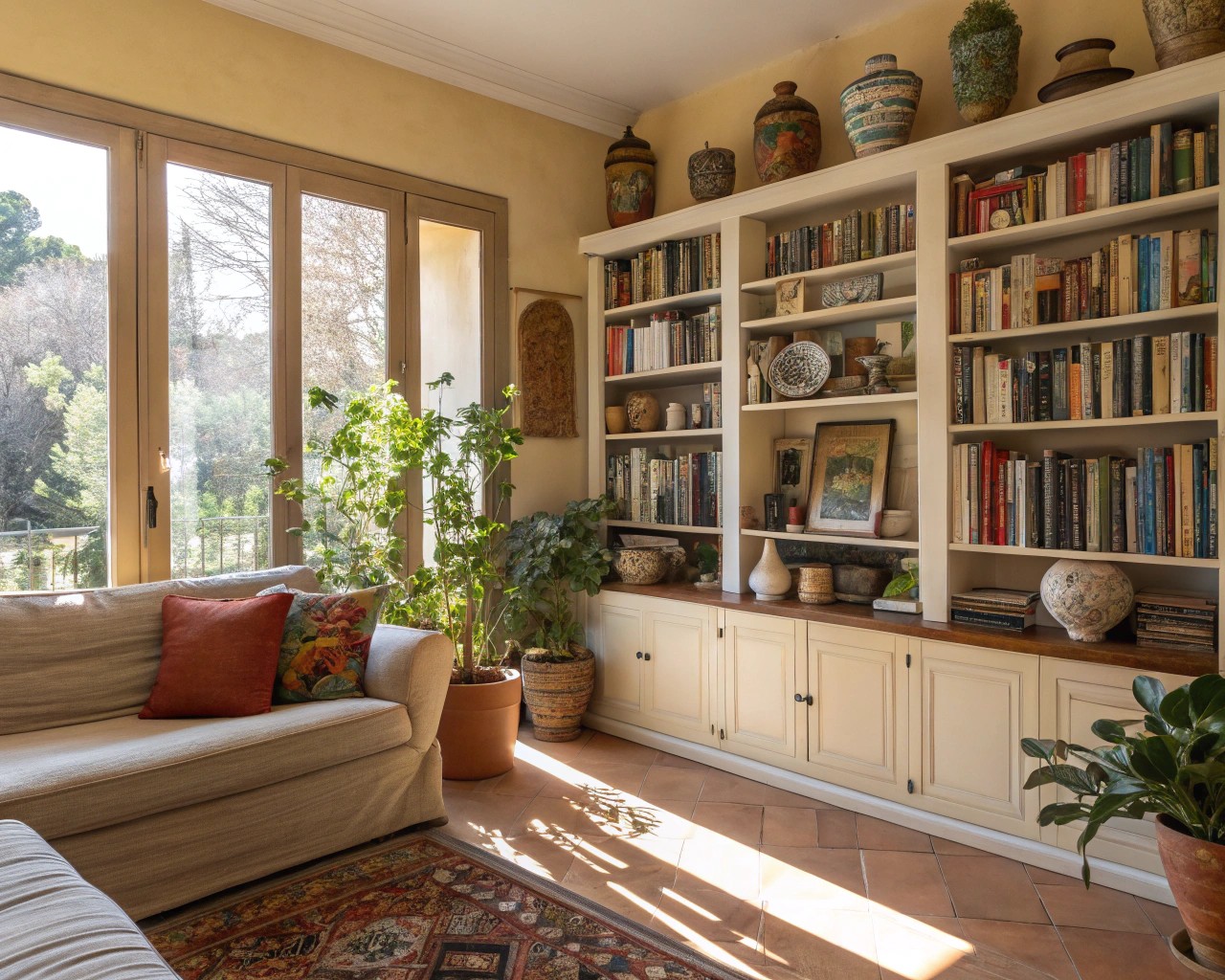
The Shift from Hidden to Displayed Storage
Traditional home design has long relegated storage to closets, cabinets, and basements—keeping life’s necessities out of sight. The overflow approach challenges this paradigm by recognizing that our belongings tell stories and can enhance rather than detract from our living spaces. This methodology acknowledges that modern American homes increasingly serve multiple functions, requiring storage solutions that adapt to changing needs while maintaining visual appeal.
Benefits of Visible Storage Systems
Psychological Impact
– Reduces stress by eliminating the “hunt” for hidden items
– Creates a sense of control and order in daily routines
– Enhances productivity by keeping frequently used items accessible
Practical Advantages
– Encourages mindful consumption when items remain visible
– Prevents duplicate purchases by maintaining inventory awareness
– Facilitates easier maintenance and cleaning cycles
Core Principles of Overflow Design
Curated Collection Strategy
The foundation of successful overflow design lies in thoughtful curation rather than mere accumulation. This approach requires distinguishing between treasured items that deserve display and utilitarian objects that function better in concealed storage.
The Three-Category System:
| Category | Display Method | Examples |
|---|---|---|
| Showcase Items | Open shelving, glass cabinets | Ceramics, books, glassware |
| Functional Display | Accessible containers, pegboards | Kitchen utensils, craft supplies |
| Background Storage | Closed cabinets, drawers | Seasonal items, maintenance supplies |
Vertical Space Maximization

American homes often underutilize vertical storage potential, with studies showing that up to 20% of available space goes unused in traditional storage configurations. The overflow philosophy capitalizes on this overlooked dimension through strategic shelving and display systems.
Vertical Storage Hierarchy:
- Upper zones (7+ feet): Seasonal and decorative items
- Eye-level zones (4-7 feet): Daily-use items and displays
- Lower zones (below 4 feet): Heavy items and child-accessible storage
Room-by-Room Implementation
Kitchen: The Heart of Functional Display
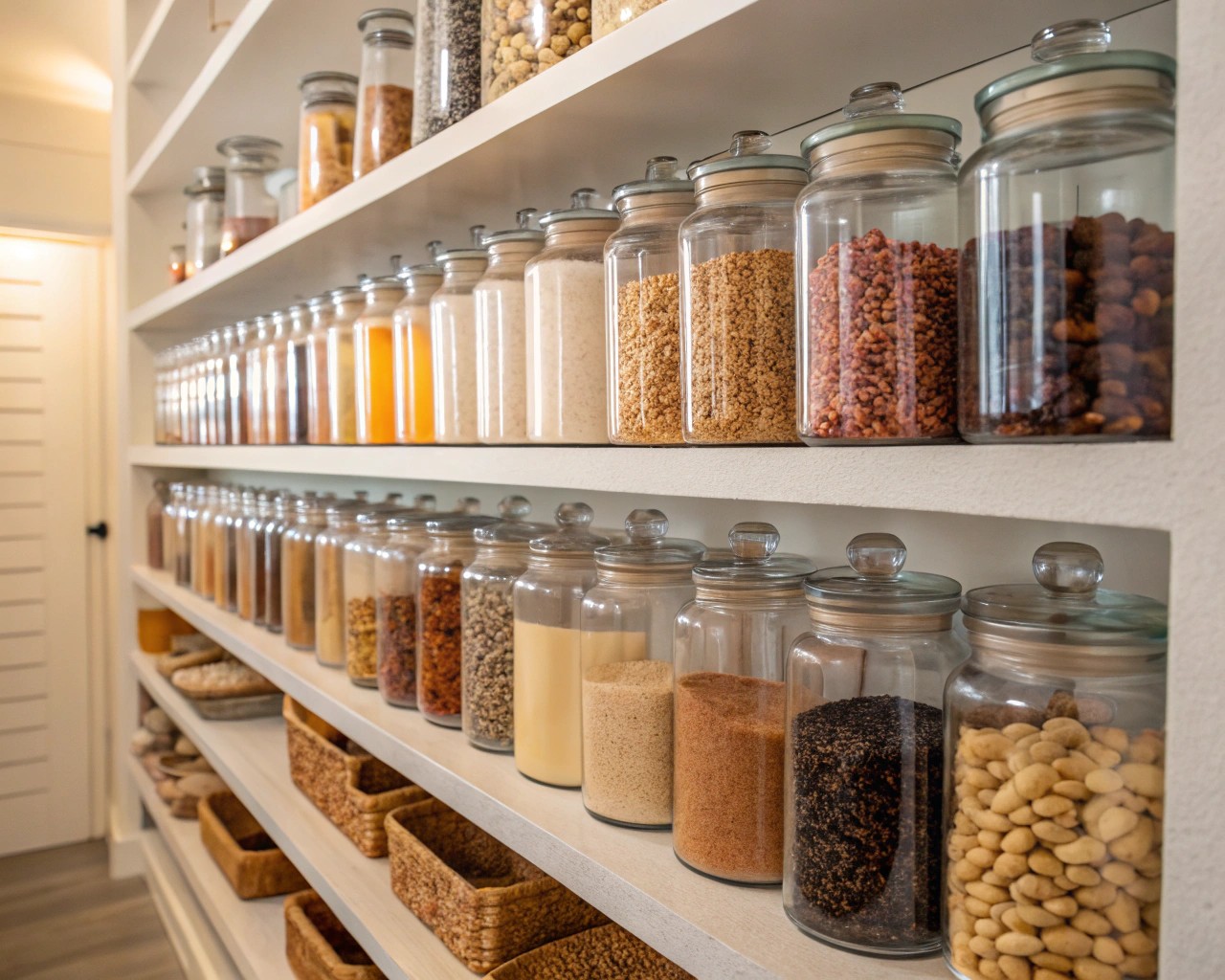
The kitchen presents the greatest opportunity for overflow design, where form and function intersect most naturally. Open shelving has evolved beyond mere storage to become a design statement that showcases both utility and aesthetics.
Essential Elements:
- Glass jar decanting: Transform pantry staples into visual elements while maintaining freshness
- Pegboard systems: Create adaptable storage that doubles as wall art
- Island integration: Incorporate open cubbies and display shelves into kitchen islands
I’ve found that clients initially resist exposed kitchen storage, fearing it will create visual chaos. However, when properly curated, open kitchen storage actually reduces daily stress by keeping essentials visible and accessible while creating opportunities for beautiful display.
Living Areas: Balancing Storage and Style
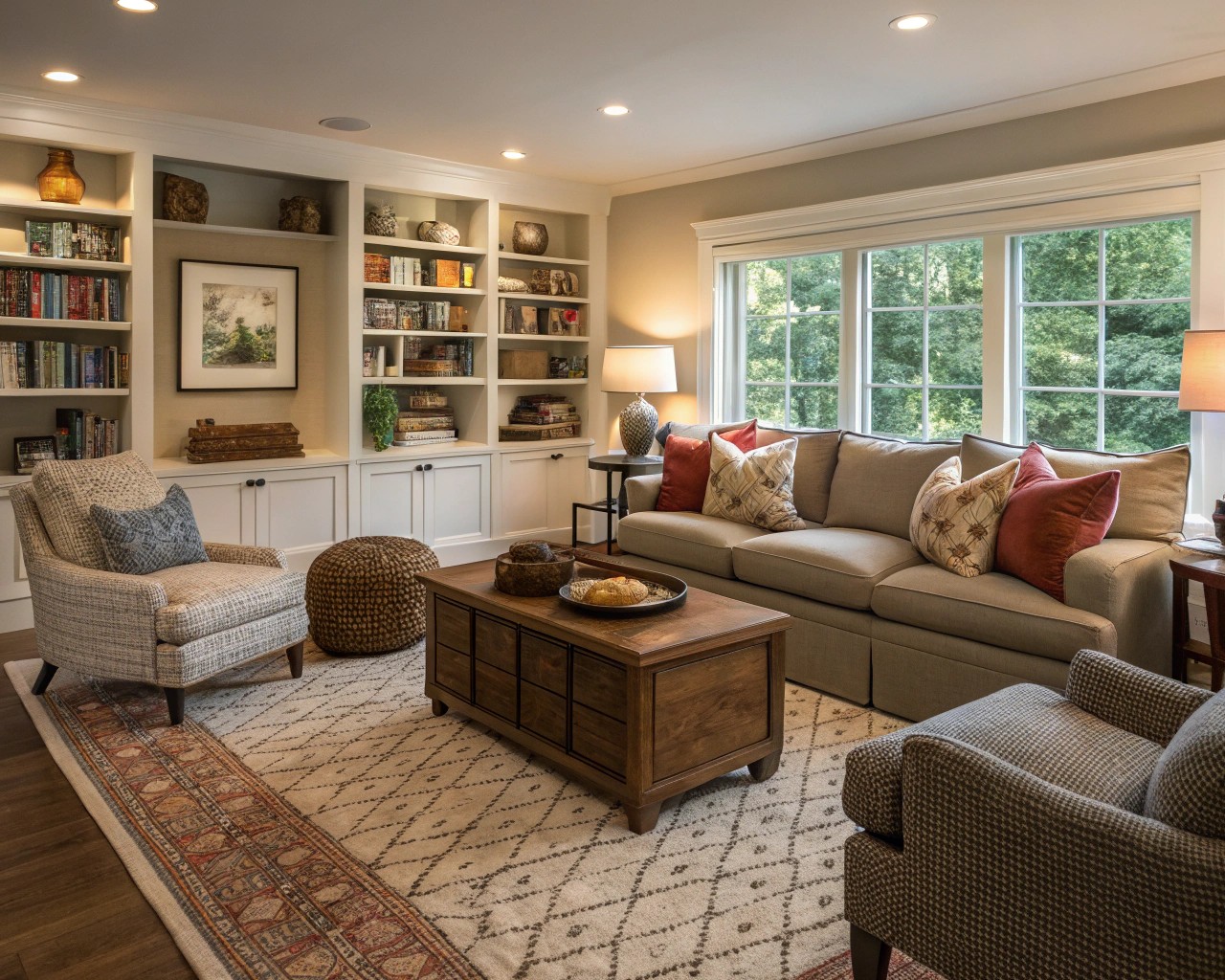
Living rooms require the most nuanced approach to overflow design, balancing storage needs with aesthetic considerations. The key lies in creating “designed moments” that serve both functional and visual purposes.
Strategic Approaches:
- Combination systems: Mix open and closed storage to create visual rhythm
- Layered arrangements: Use varying heights and depths to create visual interest
- Functional furniture: Incorporate storage ottomans, console tables with shelving
Bedrooms: Personal Curation Spaces
Bedroom overflow design focuses on creating organized sanctuary spaces that reflect personal style while maintaining calm environments. Walk-in closets and wardrobes become curated displays of personal collections.
Implementation Strategies:
- Seasonal rotation systems: Display current-season items while storing others
- Jewelry and accessory display: Transform personal items into decorative elements
- Reading nooks: Create dedicated spaces for book collections and personal libraries
Styling Techniques for Display Storage

The Rule of Three and Visual Balance
Professional styling relies on established principles that create pleasing compositions while maintaining functionality. The rule of three suggests grouping items in odd numbers to create natural visual balance.
Styling Formula Components:
- Books as foundation: Stack 2-3 books horizontally as base elements
- Height variation: Mix tall and short objects to create visual rhythm
- Texture contrast: Combine materials like wood, metal, and ceramics
Color and Pattern Coordination
Successful overflow design requires cohesive color strategies that tie displayed items into the overall room palette. This doesn’t mean everything must match, but rather that colors should create intentional relationships.
Color Strategy Options:
- Monochromatic schemes: Use varying shades of single colors for sophisticated unity
- Complementary accents: Introduce pops of contrasting colors through displayed objects
- Natural material focus: Emphasize wood, stone, and organic textures for timeless appeal
Common Mistakes and Solutions
Overcrowding and Visual Clutter
The most frequent error in overflow design is attempting to display everything at once, creating visual chaos rather than curated abundance. Research indicates that overcrowded storage systems actually reduce functionality and increase stress levels.
Solutions:
- White space importance: Leave 20-30% of display surfaces empty
- Regular editing: Rotate displayed items seasonally to maintain freshness
- Category limits: Restrict each shelf to specific item types or color families
Ignoring Functional Accessibility
Beautiful displays lose value when items become difficult to access for daily use. The overflow philosophy requires balancing aesthetics with practical functionality.
Accessibility Guidelines:
- Frequency hierarchy: Place most-used items at eye level
- Easy retrieval: Ensure displayed items can be accessed without disrupting arrangements
- Child safety: Consider family needs in display height and material choices
Material and Container Selection
Choosing Display-Worthy Storage

Not all storage containers deserve visible placement in overflow design. The selection of display containers becomes a crucial design decision that impacts both function and aesthetics.
Container Categories:
| Material | Best Uses | Design Benefits |
|---|---|---|
| Glass jars | Pantry staples, craft supplies | Transparency, uniformity |
| Woven baskets | Linens, toys, seasonal items | Texture, warmth |
| Metal containers | Industrial items, tools | Durability, modern appeal |
| Wooden boxes | Personal items, collections | Natural warmth, versatility |
Sustainability in Storage Choices
Modern overflow design increasingly emphasizes sustainable material choices that align with environmental consciousness while maintaining aesthetic appeal. This approach considers both the longevity of storage solutions and their environmental impact.
Technology Integration
Smart Storage Solutions
Contemporary overflow design incorporates technology to enhance both functionality and aesthetic appeal. Smart storage systems can adapt to changing needs while maintaining design integrity.
Technology Applications:
- LED accent lighting: Highlight display areas and create ambiance
- Digital inventory tracking: Maintain awareness of stored items without visual inspection
- Automated organization: Incorporate motorized shelving or rotating displays
Maintenance and Evolution
Seasonal Adaptation Strategies
Successful overflow design requires systems that adapt to changing needs throughout the year. This flexibility prevents the rigidity that can make beautiful storage systems impractical over time.
Seasonal Rotation Plans:
- Spring refresh: Introduce lighter colors and fresh greenery
- Summer accessibility: Prioritize outdoor and entertainment items
- Fall preparation: Integrate cozy textures and warm materials
- Winter consolidation: Focus on comfort items and indoor activities
Long-term Success Factors
The sustainability of overflow design depends on creating systems that grow and adapt with changing lifestyles. I’ve observed that the most successful implementations allow for evolution rather than requiring complete reorganization.
Success Strategies:
- Flexible systems: Choose modular storage that can be reconfigured
- Regular evaluation: Schedule quarterly reviews of display effectiveness
- Family involvement: Ensure all household members understand and contribute to systems
Living in overflow represents a fundamental shift from hiding our possessions to celebrating them as integral parts of our home’s design narrative. This approach recognizes that well-organized abundance can enhance rather than detract from our living spaces, creating environments that are both beautiful and deeply functional. The key lies in thoughtful curation, strategic display, and ongoing adaptation to ensure that our storage systems serve both our practical needs and our aesthetic aspirations.
